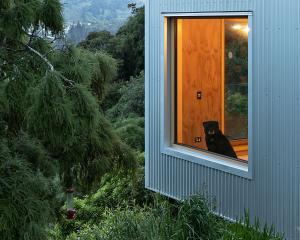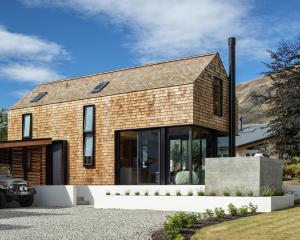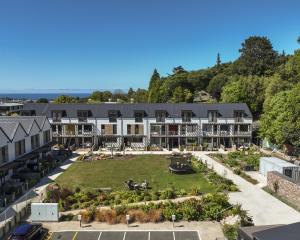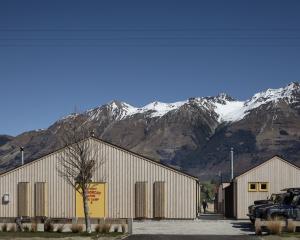
Cinematic views project deep down Lake Wakatipu and pan up to the Remarkables from this grandstand position in Queenstown. The outlook is outstanding, but not the only factor making this holiday home by local studio Assembly Architects exceptional.
The opportunity for Assembly Architects to design the project came through a paid competition offered to two practices – not something that happens often on residential projects in Aotearoa New Zealand.
What’s more, virtual-reality technology utilised by Assembly gave the clients the opportunity to take a ‘tour’ of their future home and experience the design and jaw-dropping views. Not only did Assembly win the competition to create the home, but the finished project took out a 2023 Te Kāhui Whaihanga New Zealand Institute of Architects Southern Architecture Award in the Housing category.

“Most of our work is around composition and interaction with the views and landscape,” says Justin Wright, who established Assembly Architects with his wife Louise Wright in Wellington, before they relocated to Arrowtown in 2012.
While steep sites were something the architects were experienced with, this site had extremely variable ground conditions, including a 35-degree slope, and solid rock, which dictated a technically complex build. The solution was to build from the top down.
With challenge comes opportunity, and the tricky site allowed the architects to employ elevation to create an intimate connection with the landscape.
“You pretty much have the floor, then the water – there is no foreground,” says Wright.

Views are unimpeded thanks to structural glazing that eliminates any vertical support. Window height is at its maximum and the window seat is raised to position residents up against the lake views, lending a sense of the water being within reach.
“The horizontal ceiling plane assists to frame the view, which pulls in the panorama and anchors the outlook. Glazing is extended around the corner to capture the last piece of Queenstown Bay,” says Wright.
The three-level house, owned by a group of friends who holiday here with their families, is organised with the living area at the top to enjoy the most elevated position. The four bedrooms and bathrooms slot into the middle section and garaging sits at ground level. Conceptually, the organisation can be conceived as three tectonic plates that shift, project and create different shapes.

“When you’re inside, the staircase penetrates through the plates,” says Justin. “You read that as journeying up through these thick timber plates. Throughout the internal journey, we’ve articulated the excavated rock with stacked schist walls to achieve a rock-solid feeling as you're moving up,” says Wright.
Cedar lines the walls and oak lines the ceilings and floors and serves as a material contrast to local schist.
Assembly also designed the home’s interiors, taking a pared-back approach that generates a raw, robust, yet refined aesthetic. In the kitchen, the bronze-mirror splashback reflects the view of the Remarkables and lake and is offset by an alpine-granite benchtop with rough-cut edging. American oak veneer to the cabinetry complements this high-end selection of finishes. Throughout the home, the use of natural materials paired with velvet curtains, for example, create luxurious tactility and a warm interior palette.

The beloved home is one of the first projects that Assembly used virtual reality in the design and project-presentation process. A drone captured a 360-degree panorama of the site, which was put into software and showed how the views could be captured in the house.
“That helped us refine the exact heights and placement of doors and walls, move glazing around or change window aperture,” says Wright. “We used to go through the process of clients questioning if a room was big enough. They’d get out the measuring tape, then decide the space needed to be bigger. As a result, houses incrementally grew 15 to 20 percent in size.”
The technology was a clincher in Assembly conveying its no-holds barred approach to the design of this home, and ultimately winning the competition bid. “The clients had the experience of walking through their house, and very little changed from that first concept to what was executed,” says Wright.



PROJECT TEAM
Contractor: Nicoll Thomson Builders
Landscape: Assembly Architects and Creation Green
Photography: Simon Devitt











